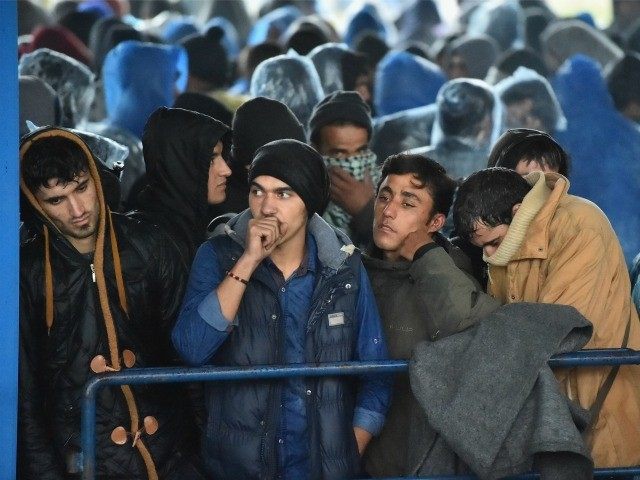LJUBLJANA, Slovenia (AFP) – Slovenia called in the army to help it manage a flood of refugees seeking to reach northern Europe ahead of winter, as the small EU state became the latest trouble spot on the migrant trail.
The Slovenian government amended the country’s defence law early Wednesday to allow soldiers to join border police in patrolling the 670-kilometre (416-mile) border with Croatia, and said it would ask for financial backup from the EU to deal with an influx that has “exceeded all manageable possibilities”.
Since Saturday, when Hungary sealed off its border with Croatia, more than 19,460 migrants have arrived in Slovenia, a nation of two million people.
Under the new measures approved by parliament, Slovenian soldiers can assist police in patrolling the border, detain people and hand them over to police, and issue orders to civilians in the border area.
Until now, the army could only provide technical and logistical support to police.
With at least 9,000 people landing on Europe’s beaches every day, there appeared to be no end in sight to the continent’s biggest migration wave since World War II.
“The last 24 hours have been the toughest and most demanding since the start of the crisis,” the Slovenian government said, warning it was “delusional” to expect small countries to succeed where larger ones had failed.
Prime Minister Miro Cerar told journalists on the sidelines of the parliamentary session it would also ask the bloc for backup from police forces in other EU countries and extra equipment for its own officers.
EU Commissioner for Migration Dimitris Avramopoulos is expected to visit Slovenia on Thursday to discuss the request.
In Greece, the crisis showed no sign of abating with a clear “spike in arrivals” that left 27,500 people packed on the Greek islands by Tuesday morning, the UN said.
And thousands were left stranded in wet, freezing weather on Croatia’s frontier with Serbia, after travelling up through Greece and Macedonia.
More than 600,000 migrants and refugees, mainly fleeing violence in Syria, Iraq and Afghanistan, have braved the dangerous journey to Europe so far this year.
The trip that many have made on inflatable boats from Turkey to Greece has left over 3,000 dead or missing.
The goal for many is the EU’s biggest economy Germany, which expects to take in up to one million refugees this year.
Problems with relocation scheme
Last month, the EU announced plans to relocate 120,000 asylum seekers from overstretched frontline states Italy and Greece by means of a compulsory quota system that was fiercely opposed by some eastern members of the bloc.
The plan requires most of the 28 member states to accept a share of 160,000 people from the two Mediterranean nations over two years.
So far only 19 Eritrean asylum seekers have been relocated from Italy to Sweden although another 100 people are due to be flown to other cities in the coming days.
Out of the 23 member states that are legally required to admit a share of the human burden, only six have offered immediate places so far — Austria, France, Germany, Luxembourg, Spain and Sweden, the source said.
Member states have also been slow to follow up with promised financial help — out of the 2.8 billion euros ($3.2 billion) pledged at an emergency EU summit on September 23, only about 474 million euros has materialised.
In a related development, the EU’s border agency said member states had provided less than half of the personnel it had requested to help out in overstretched locations in Greece and Italy.
Earlier this month, the agency said it needed 775 more border guards to help out along the bloc’s frontiers, but so far member states have only offered to provide 291.

COMMENTS
Please let us know if you're having issues with commenting.